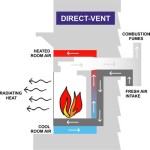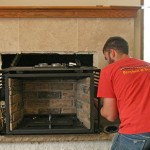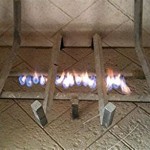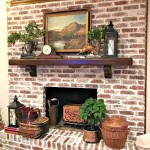Victorian Fireplace Front Grates: A Comprehensive Overview
Victorian fireplace front grates represent a significant element of both functionality and aesthetic design within historical interiors. Originating during the reign of Queen Victoria (1837-1901), these grates served a crucial purpose in containing fires, promoting efficient combustion, and preventing debris from escaping into the room. Beyond their practical value, they were intricately crafted to reflect the prevalent artistic styles and social values of the era, adding a touch of elegance and sophistication to homes of all social classes, albeit with varying degrees of opulence.
The Victorian period witnessed an explosion of industrialization and advancements in manufacturing techniques, which directly impacted the design and production of fireplace grates. Mass production allowed for greater accessibility, with grates becoming available to a wider segment of the population. Simultaneously, the burgeoning middle class fueled a demand for ornate and decorative features in their homes, leading to a proliferation of styles and designs reflecting diverse tastes and aspirations. These grates, therefore, offer a tangible glimpse into the social and technological landscape of the Victorian era.
Key Aspects of Victorian Fireplace Grate Design
Several defining characteristics distinguish Victorian fireplace front grates from those of preceding or subsequent periods. These features are rooted in both functionality and aesthetic considerations, reflecting the evolving tastes and technological capabilities of the time.
One of the most prominent characteristics is the extensive use of decorative ironwork. Victorian grates often feature intricate scrollwork, floral motifs, geometric patterns, and depictions of animals or mythical creatures. These embellishments were typically cast in iron, offering durability and the ability to create complex designs. The level of ornamentation varied depending on the social standing of the homeowner, with wealthier families opting for more elaborate and costly designs.
Another defining feature is the emphasis on radiant heat. Victorian fireplaces were primarily designed to provide direct heat to the room. The front grate played a role in radiating heat into the space, and its design often incorporated features to enhance this effect. For instance, some grates featured reflectors or angled bars to direct heat outwards. The efficient transfer of heat was a primary concern, particularly during the colder months, and the design of the grate contributed significantly to the overall performance of the fireplace.
Material selection was also a crucial aspect of Victorian fireplace grate design. Cast iron was the most commonly used material due to its durability, heat resistance, and ability to be molded into intricate shapes. However, other materials, such as brass, steel, and even silver plating, were sometimes incorporated to add decorative accents or enhance the overall aesthetic appeal of the grate. The combination of different materials and finishes added visual interest and further reflected the diverse tastes of the Victorian era.
Materials and Manufacturing Techniques
The mass production of Victorian fireplace front grates was heavily reliant on advancements in iron casting techniques. The development of improved furnaces and molding processes allowed for the creation of increasingly complex and detailed designs. Foundries across Britain and other industrialized nations specialized in the production of fireplace grates, employing skilled craftsmen who were adept at molding, casting, and finishing ironwork.
Cast iron was produced by melting pig iron in a furnace and pouring the molten metal into molds. These molds were typically made of sand, which was compacted around a pattern of the desired design. Once the molten iron cooled and solidified, the mold was broken to reveal the casting. The casting was then cleaned, finished, and assembled with other components to create the complete fireplace grate. The use of mass-produced components helped to reduce costs and increase the availability of fireplace grates to a wider audience.
The finishing processes were also critical to the overall appearance of the fireplace grate. Cast iron was often painted black or given a protective coating to prevent rust. In some cases, the iron was polished to a high shine or treated with chemical solutions to create a decorative patina. Brass and steel components were often polished and lacquered to maintain their luster. The careful application of finishes enhanced the aesthetic appeal of the grate and contributed to its longevity.
Styles and Variations of Victorian Fireplace Grates
The Victorian era encompassed a wide range of artistic and architectural styles, and these influences were reflected in the design of fireplace front grates. Different styles were popular at different times during the Victorian period, and variations existed based on regional preferences and individual tastes.
One of the most popular styles was the Gothic Revival, which drew inspiration from medieval architecture. Gothic Revival fireplace grates often featured pointed arches, trefoil motifs, and other elements reminiscent of cathedrals and castles. These grates were typically made of cast iron and emphasized vertical lines and dramatic ornamentation.
Another prominent style was the Rococo Revival, which embraced ornate curves, floral designs, and asymmetrical compositions. Rococo Revival fireplace grates were characterized by their delicate and elaborate detailing, often featuring scrolling foliage, cherubs, and other whimsical motifs. These grates were frequently made of cast iron with brass accents or silver plating to enhance their elegance.
The Aesthetic Movement, which emerged in the late 19th century, promoted a focus on beauty and craftsmanship for their own sake. Aesthetic Movement fireplace grates often featured stylized floral patterns, geometric designs, and references to Japanese art. These grates were typically more restrained in their ornamentation than those of the Gothic Revival or Rococo Revival styles, but they still emphasized high-quality materials and meticulous craftsmanship.
Furthermore, the Arts and Crafts movement, which overlapped with the later Victorian period, advocated for a return to traditional craftsmanship and simple, honest designs. Arts and Crafts fireplace grates often featured hammered ironwork, exposed joinery, and naturalistic motifs. These grates were typically less ornate than those of earlier Victorian styles, emphasizing functionality and the beauty of natural materials.
Beyond stylistic variations, Victorian fireplace grates also came in a variety of sizes and shapes to fit different fireplace openings. Smaller grates were designed for use in bedrooms or smaller rooms, while larger grates were intended for use in living rooms or dining rooms. The shape of the grate could also vary, with some grates being rectangular, arched, or even semi-circular.
The design of the grate was also influenced by the type of fuel that was burned in the fireplace. Coal-burning grates typically featured a deeper firebox to accommodate the larger volume of fuel, while wood-burning grates were often shallower and had wider openings to allow for better ventilation. The specific design of the grate was therefore tailored to the specific needs of the fireplace and the preferences of the homeowner.
In summary, Victorian fireplace front grates represent a fascinating intersection of functionality, design, and social context. They were not merely utilitarian objects but rather carefully crafted elements that reflected the tastes, values, and technological capabilities of the Victorian era. They offer a valuable window into the past and provide a tangible connection to a time of great change and innovation.

Victorian Bedroom Fireplace Front 4119b Antique Co

Lytton Arch Fireplace Grate For Solid Fuel Victorian

Antique Fireplace Grates Reclaimed Red Nostalgia

Victorian Cast Iron Convex Grate Fire Insert Surround Original

Victorian Tiled Fireplaces Grate Expectations

Buy Antique Victorian Hob Grate Fireplace Insert

Victorian Marble Fire Surround With Arched Cast Iron Grate Traditional Living Room Cheshire By Nostalgia Fine Antique Fireplaces Ltd Houzz

Stovax Victorian 16 Tiled Fronts Solid Fuel Bonfire

How To Keep Your Victorian Fireplace Safe Clean And Efficient Adrian Flux

Stovax Victorian 16 Tiled Fronts Solid Fuel Bonfire
Related Posts








